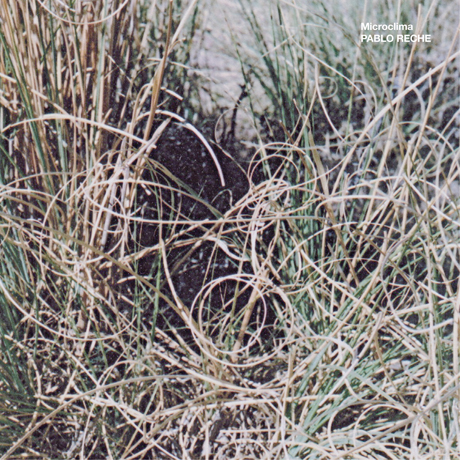Microclima. PABLO RECHE
(Impulsive Habitat 2012)
What sounds lie beneath our feet, trampled upon without regard? From which life form do these sounds emanate? One of the joys of field recording is the amplification of the miniature, life deemed as insignificant is raised to a level of prominence, once heard it is difficult to relegate it to the periphery again. This awareness seems to be a driving force behind Pablo Reche’s new composition Microclima. Throughout Microclima’s eighteen minutes Reche places us deeply within a small patch of grass, allowing us to hear the clicks and rumbles that characterise this part of the biosphere. Listening to Microclima confronts us with the fact that we are more aware of life in distant lands than of that which exists before us.
Microclima begins with a gradual crescendo of static-sounding crackles which loop their way into the listener’s consciousness. The use of equalisers to exaggerate the original recordings provides an interesting relationship between the synthetic and organic worlds. The use of software in the shaping of the work never threatens to become too heavy handed. Indeed Reche’s highlighting of high and low frequencies serves to increase our wonder at the alien sounds that exist within our backyard spaces.
As Microclima progresses the crackles fade away. Moments of silence are followed by deep earthy rumbles which suggest the microphones may have been placed underground. At this stage it is difficult to precisely know what we can hear. We investigate this foreign terrain without any visual queues, relying solely upon our auditory senses. Reche provides scant information to guide us into this unfamiliar territory, forcing the listener to form their own narrative. For some this experience could contribute to the success of the work, whilst for others it might lead to frustration. This process poses some interesting questions relating to the role of the audience in interpreting works of art, both visually and auditorily based. How much of the audience’s understanding should be directed by the composer? At which point does a subjective interpretation miss the composer’s mark? My own listening imagined the microphones moving downwards, first capturing the sounds from the earth’s surface until they gradually burrow into the subterranean world.
In the case of Microclima it seems any additional information from Reche could either help or hinder its appreciation by the the audience. At times a sense of curiosity begs the question as to which insect the sounds belong to, however for the majority of the work it is enough to allow the alien crackles to present themselves in a way which sparks the imagination and sense of wonder towards the great unknown that lies before us.
Microclima is best listened to through headphones, its subtle collection of clicks and pops might be lost through some external speakers. For those who are prepared to use their imagination Microclima is a rewarding experience which presents us with exotic yet easily accessible sounds. As Reche foregoes a didactic approach the audience is able to create their own narrative, yet the work is never so oblique that this process becomes meaningless. It is this fine balancing act that makes Microclima an engaging work of art.
-Jay-Dea Lopez


